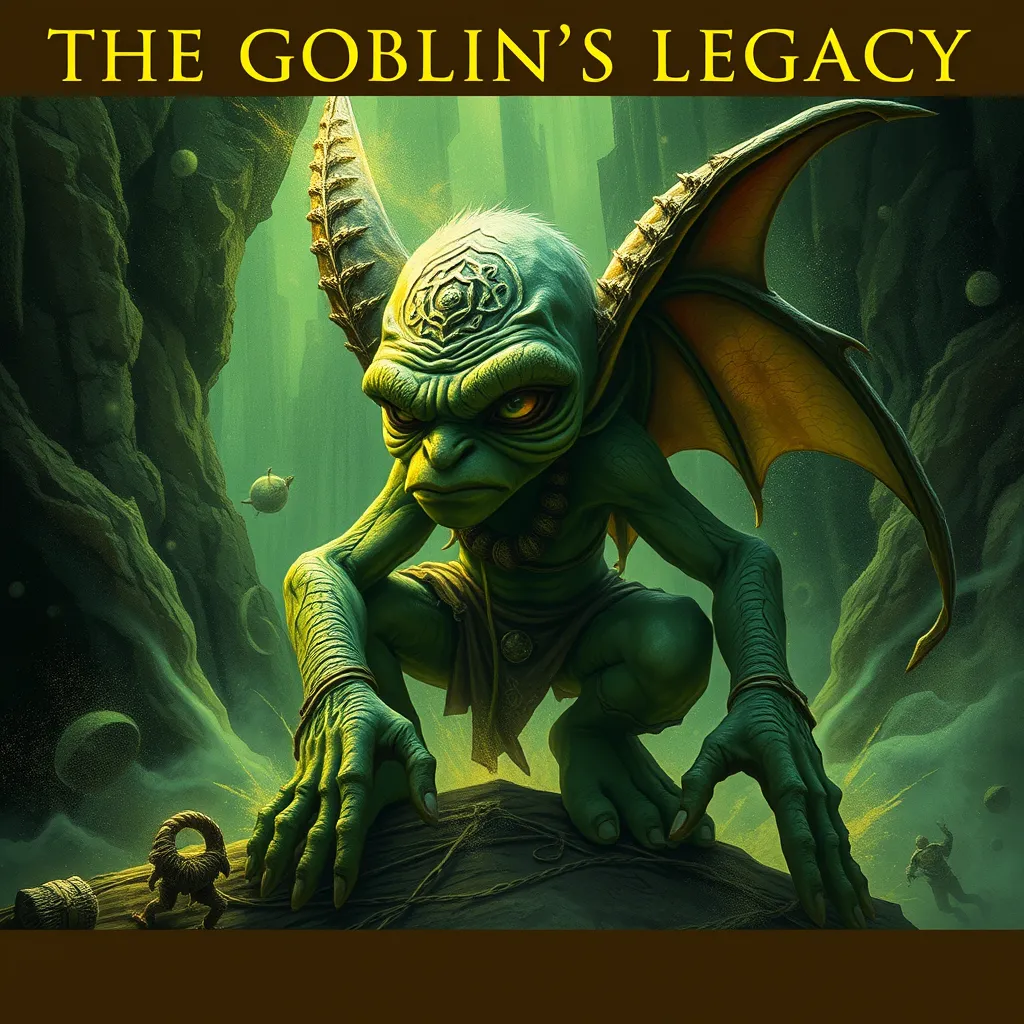The Goblin’s Legacy: Exploring the Impact of Goblin Lore on Modern Culture
I. Introduction
Goblins are often depicted as small, mischievous creatures found in folklore around the world. Typically characterized by their grotesque appearance and cunning nature, goblins have become emblematic of various themes in mythology, including greed, trickery, and the darker sides of human nature.
Across different cultures, goblin lore varies significantly. From the malevolent goblins of European folklore to the more benevolent versions found in Asian traditions, these stories reflect the values and fears of the societies that create them. This article aims to explore the lasting impact of goblin mythology on contemporary society, examining how these ancient tales have permeated modern culture and continue to influence our worldview.
II. Historical Origins of Goblin Lore
The origins of goblin lore can be traced back to ancient European folklore, where they were commonly associated with the earth and the underground. These creatures were often depicted as malevolent beings who would trick or harm humans, leading to a complex understanding of their role in society.
It’s essential to distinguish goblins from other mythical creatures, such as elves and fairies. While elves are often portrayed as ethereal and benevolent beings, goblins are typically more sinister, associated with mischief and malevolence. Over time, the characteristics of goblins have evolved; they have been depicted both as fearsome antagonists and as comical figures, contributing to their rich narrative history.
III. Goblins in Literature and Media
Goblins have made significant appearances in literature and media, with some of the most famous depictions coming from authors like J.R.R. Tolkien and J.K. Rowling. In Tolkien’s works, particularly “The Hobbit,” goblins are portrayed as brutish and violent, serving as antagonists to the heroes of the story. Similarly, in Rowling’s “Harry Potter” series, goblins are depicted as intelligent, skilled in metalwork, and often portrayed with a more nuanced representation.
In film and television, goblins have also played prominent roles. Movies like “Labyrinth,” featuring the Goblin King, and the “Harry Potter” series, where goblins manage the Gringotts bank, showcase the diverse interpretations of goblins in popular media.
Moreover, goblins have firmly established their presence in video games and interactive media. Titles such as “World of Warcraft” and “Dungeons & Dragons” feature goblins as integral characters, adding depth to gameplay through their unique traits and abilities. Players often encounter goblins as both foes and allies, showcasing their versatility in storytelling.
IV. Symbolism and Themes Associated with Goblins
Goblins often embody themes of greed and malice, serving as cautionary figures that reflect human vices. Their penchant for trickery and mischief serves as a reminder of the darker aspects of human nature. This duality is particularly intriguing; goblins can be seen as both tricksters and helpers, depending on the context of the story.
- Tricksters: In many tales, goblins use their cunning to outsmart humans, often leading to humorous or disastrous consequences.
- Helpers: Conversely, some narratives depict goblins as helpful creatures, offering assistance in exchange for something valuable.
Through these varying representations, goblins reflect societal fears and anxieties, acting as a mirror to the moral dilemmas faced by humanity throughout history.
V. Goblins in Modern Popular Culture
In recent years, there has been a significant rise in goblin-themed merchandise and collectibles. From figurines to clothing, the fascination with goblins has found a place in contemporary consumer culture. This trend speaks to the broader revival of interest in fantasy and folklore.
Goblins have also influenced fashion and art, appearing in various designs and styles that incorporate their unique features. Artists use goblin imagery to explore themes of otherness and the grotesque, pushing boundaries in visual storytelling.
Additionally, comic books and graphic novels have embraced goblin characters, weaving them into complex narratives that challenge traditional stereotypes. These representations often highlight the multifaceted nature of goblins, moving beyond mere caricatures to explore deeper themes of identity and belonging.
VI. The Role of Goblins in Gaming and Fantasy Communities
In tabletop role-playing games (RPGs), goblins have become iconic characters that players can encounter. Their presence adds an element of unpredictability to gameplay, often serving as comic relief or unexpected adversaries. The significance of goblins in fantasy world-building cannot be overstated; they contribute to the richness of the narratives that players create.
Moreover, gaming communities have embraced goblin lore, with fans creating their interpretations and expansions of goblin narratives. This engagement fosters a sense of belonging among players, allowing them to explore their creativity while connecting with others who share their interests.
VII. Cultural Appropriation and Reimagining of Goblins
The representation of goblins in modern media raises important discussions about cultural appropriation and stereotypes. Traditional depictions of goblins often perpetuate harmful tropes, leading to a critique of how these creatures are portrayed in contemporary storytelling.
However, diverse interpretations of goblins in non-Western cultures provide opportunities for reimagining these characters. Creators from various backgrounds are reshaping goblin narratives, bringing fresh perspectives that challenge stereotypes and celebrate cultural richness.
VIII. Conclusion
The impact of goblin lore on modern culture is profound and multifaceted. From literature and film to gaming and merchandise, goblins continue to captivate our imagination. Their complex representations speak to our fears, desires, and moral dilemmas, making them relevant even in contemporary society.
As we explore and appreciate the rich tapestry of goblin mythology, we uncover the enduring fascination with these creatures. They remind us of the intricate interplay between folklore and modern storytelling, encouraging us to delve deeper into the narratives that shape our understanding of the world.




